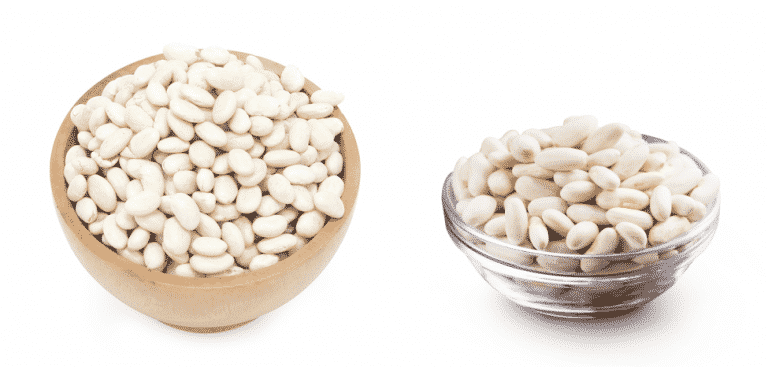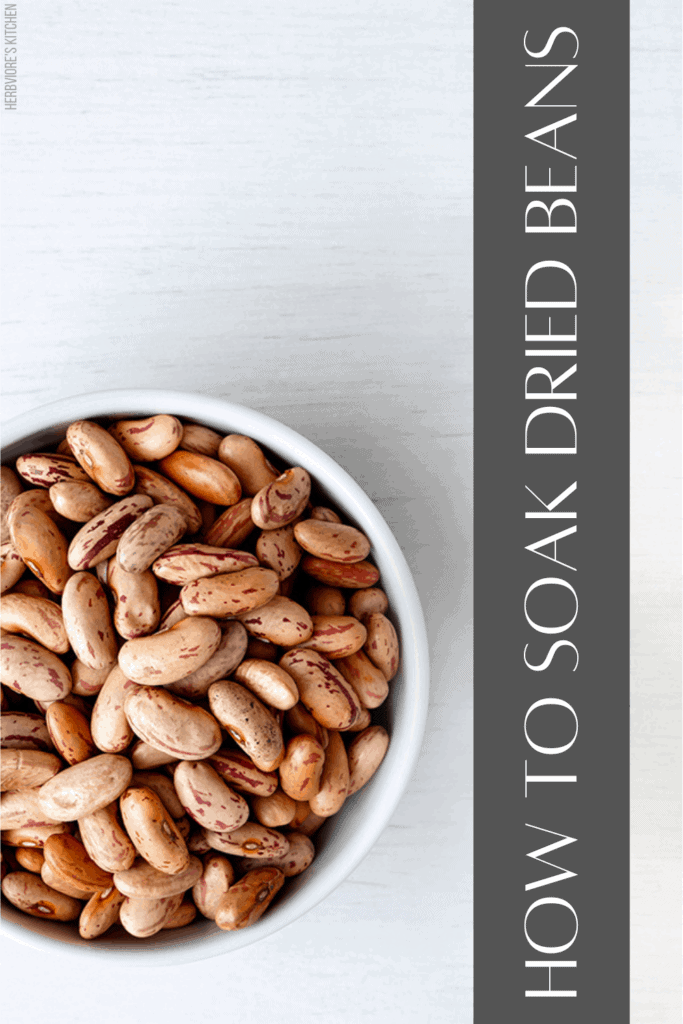This White Beans: The Ultimate Guide to Great Northern, Navy, Lima and Cannellini Beans post includes affiliate links. When I find a great product or service, I like to share it with my readers. Sometimes I use affiliate links so I can earn a commission for my recommendations. Thank you for your support!.
Allow me to talk about legumes, and more specifically, let’s get down to one of my favorite vegan ingredients: white beans. This section of beans has a lot of healthy choices that can be used in some really tasty vegan recipes. For example, Vegan Cassoulet, Vegan White Bean Soup, and Rich and Savory Kale
As a home cook and food blogger, I rely on beans as a tasty, nutritious, and budget-friendly staple. Canned or dried, beans are my go-to for adding protein and fiber to soups, stews, salads, and more. Two of my favorite varieties are cannellini beans and great northern beans. While they are similar in many ways, there are some key differences in taste, texture, and best uses that impact how I choose between them for recipes.
An Overview of Cannellini and Great Northern Beans
Cannellini beans and great northern beans are both types of white beans commonly used in Italian and American cooking. They belong to the same Phaseolus vulgaris species of beans.
Cannellini beans are also known as white kidney beans, They originated in South America and are a staple ingredient in Tuscan cuisine, Great northern beans were cultivated in the Pacific Northwest starting in the late 19th century They have a prominent role in dishes like senate bean soup
Both beans are medium-sized, oval-shaped and white in color when dried. They are available dried canned, or sometimes fresh. Below I’ll go over the nuances in taste, texture, nutrition, and best uses for these beloved white bean varieties.
How Taste and Texture Compare
While quite similar, cannellini and great northern beans do have slightly different flavors and textures.
Cannellini beans have a robust, earthy flavor and a hearty, firm texture when cooked. Their skins are a bit thicker, so they tend to hold their shape well when cooked or pureed into dips and spreads.
Great northern beans have a more delicate flavor. Their texture is softer, smoother, and quicker to break down when cooked. Great northerns almost fall apart into a creamy puree when cooked thoroughly.
“The cannellini lends itself better towards soups and stews,” explains Vince Hayward of Camellia Brand Beans. “The great northern is a bit more delicate and lends itself towards baking or when a lighter texture is desired.”
Nutrition Profile and Health Benefits
Cannellini and great northern beans have very similar nutritional values. One half-cup cooked serving of either provides around:
- 115 calories
- 8 grams protein
- 5-7 grams fiber
- 80% DV manganese
- 15% DV iron
- 15% DV potassium
The extra fiber in great northerns gives them a slight edge. But both offer cholesterol-lowering fiber, energizing iron and protein, bone-building manganese, and potassium for heart health.
Beans also contain antioxidant polyphenols like flavonoids that combat inflammation and disease. The resistant starch in beans supports gut microbiome health as well.
Including white beans like cannellinis and great northerns a few times a week provides excellent nutrition. I always keep canned beans on hand for quick, nourishing meals.
Best Uses for Each Variety
With their subtly different properties, cannellini and great northern beans each shine in certain recipes.
Cannellini beans work well for hearty dishes like:
- Minestrone, sausage bean, and Tuscan bean soups
- Bean salads with bold vinaigrettes
- Refried beans
- Bean dips and spreads
- Stews like cassoulet
Great northern beans suit lighter dishes:
- Pureed bean soups
- Salad Niçoise
- Senate bean soup
- Baked beans
- White chili
- Beans baked into breads and desserts
Their soft texture makes great northerns ideal for achieving a silky smooth puree. I also like to mash them with olive oil, lemon, and garlic for bruschetta.
Swapping the Two Beans in Recipes
Luckily both beans can be used interchangeably in most recipes. I simply opt for great northerns when I want a delicate flavor and soft texture, and cannellinis when I desire more body and bite.
The cooking time might vary slightly between the two. Cannellini beans take a bit longer to soften due to their sturdier skins. If I only have great northerns on hand, I’ll monitor beans closely when simmering them from dried and not cook them quite as long.
With canned beans, you can swap one for the other directly without adjusting cook times. Rinsing and draining the beans helps remove excess sodium and carbs.
Tips for Cooking and Storing Beans
To fully enjoy the benefits of these nutritional powerhouses, I follow some best practices when cooking and storing beans:
- Sort through dried beans and rinse before soaking
- Soak beans for 8 hours or overnight in cold water
- Drain off soaking liquid before cooking
- Simmer beans gently in fresh water; don’t boil
- Add salt, tomatoes, and acids like lemon late in cooking
- Store cooked beans in broth in the fridge up to 5 days
- Freeze beans in portioned quantities for longer storage
Taking the time to properly prepare beans rewards you with tender, intact legumes bursting with flavor. My pantry always includes a variety of beans for quickly making soups, plant-based entrees, veggie burgers, and more nutritious meals.
The Takeaway
Cannellini and great northern beans are two excellent additions to any diet. Their differences in texture make each variety better suited for certain dishes. When a recipe simply calls for white beans, I choose great northerns for silkier purees or cannellinis when I want beans that maintain their shape. With proper cooking methods, these nutrition-packed legumes will be tender, tasty, and ready to create delicious bean-based meals.

How to Soak Dried Beans & What It Means to De-Gas Your Beans
One of the biggest challenges to cooking with dried beans is timing. Dried beans cook best when they’re soaked in water for at least 8 hours. Soaking dried beans significantly decreases the beans’ cook times.
Some argue that soaking beans prevents them from causing, ahem, unpleasant flatulence. This process is sometimes referred to as degassing your beans. Team de-gassers suggests that pre-soaking beans helps to remove certain sugars in the beans that aren’t easily digested. When those sugars get to the lower digestive tract, they begin to ferment. From there, you know the rest.

The de-gassing theory seems to have been both debunked and proven many times over, so whether this practice works remains a bit of a mystery. The good news though? According to the Cleveland Clinic, the more regularly you eat beans the more quickly your body will adjust to digesting them making any gastro-intestinal distress a short-term problem.
Should You Discard the Bean Soaking Water?
My research shows that opinions on this are mixed. Some experts say that you should use the water that the beans were soaked in because it will help the flavors and colors of the beans stay.
Team de-gassers say the opposite. Before you cook the beans, you soaked them to get rid of the sugars that cause gas. So why would you use that water to cook? An excellent point, I think. I always discard my soaking water, then rinse the soaked beans before cooking with them.
Cannellini Beans Great Northern Beans What’s The Difference
FAQ
Can you substitute great northern beans for cannellini beans?
What is the difference between cannellini beans and white beans?
Are cannellini beans also called navy beans?
Which white beans are the healthiest?
What are the differences between great northern beans and cannellini beans?
Cannellini beans and great northern beans are similar in taste and nutritional value. Cannellini beans are slightly smaller than great northern beans, but they are still very tasty. In addition, they are easy to digest and absorb. They are also rich in protein and fiber.
What types of cuisine are great northern and cannellini beans used in?
They are usually used in soups, stews, sauces, and casseroles. Great northern beans are larger and are usually used in salads, chili, and other dishes where texture matters. Both types of beans are delicious but cannellini beans are generally preferred because they are easier to digest and absorb.
What are the uses of great northern beans?
Despite their mild taste, they retain their form in dishes and absorb the flavors of foods they are cooked with. Great northern beans may be used in many ways because they complement the taste and texture of most dishes. They’re typically used to make baked beans, soups, and stews.
What are the best uses for each type of bean?
Known as Boston beans, the white coco, pea beans or Navy beans are perfect for dishes that don’t need the full bean shape to shine: purees, soups, stews and baked beans are some of the frequent dishes. Great Northern beans are smaller than cannellinis and and suitable for any number of uses such as salads, soups, stews and purees.
